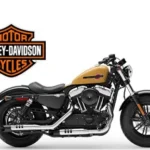House insurance is a vital tool for protecting your home and personal belongings, but it’s important to understand exactly what is covered—and what isn’t—before disaster strikes. Standard home insurance policies provide coverage for a variety of risks, but there are also notable exclusions that homeowners should be aware of. This guide will break down what’s typically covered by house insurance, what isn’t, and how you can enhance your policy to meet your specific needs.
Introduction to House Insurance Coverage
Understanding what your house insurance covers is essential to ensure you have the right protection in place. Homeowners often assume their policy covers every possible event, but house insurance has limits, exclusions, and specific conditions. By being informed, you can avoid unpleasant surprises when it’s time to file a claim.
Importance of Knowing Your Coverage House insurance protects you financially against potential risks, such as property damage, theft, and liability. Knowing the details of your coverage ensures that you can adequately protect your home, personal property, and yourself from unexpected expenses.
Basic House Insurance Coverage
Standard house insurance policies generally consist of four key components:
Dwelling Coverage: Protects the physical structure of your home, including walls, roof, and foundation, from covered perils like fire, wind, and vandalism.
Personal Property Coverage: Covers your personal belongings—furniture, electronics, clothing, and more—if they are damaged or stolen due to covered perils.
Liability Protection: Provides coverage if someone is injured on your property or if you accidentally cause damage to someone else’s property, including legal fees and medical costs.
Additional Living Expenses (ALE): Pays for temporary housing and other related expenses if your home is uninhabitable due to a covered event.
What’s Covered by Standard House Insurance?
While specific coverages vary by policy, the following perils are commonly covered under standard house insurance policies:
Fire and Smoke Damage: If your home or belongings are damaged by a fire or smoke, your policy will typically cover repairs or replacements.
Storm Damage: Wind, hail, and falling trees can cause significant damage to your home, and most standard policies provide protection against these risks.
Theft and Vandalism: If your home is burglarized or vandalized, house insurance helps cover the cost of replacing stolen items or repairing damage.
Burst Pipes and Water Damage (Non-Flood): Water damage resulting from a burst pipe, faulty plumbing, or a leaking roof is usually covered, but not damage caused by flooding.
Falling Objects: Damage caused by objects falling onto your home, such as tree limbs or ice, is typically covered.
What’s Not Covered by Standard House Insurance?
Standard house insurance policies also have limitations and exclusions, which are important to understand to avoid gaps in coverage. The most common exclusions include:
Flood Damage: Standard policies do not cover damage caused by flooding. Homeowners in flood-prone areas should purchase separate flood insurance through the National Flood Insurance Program (NFIP) or a private insurer.
Earthquake Damage: Like floods, earthquakes are excluded from standard policies, though coverage can be added with an earthquake endorsement.
Wear and Tear: Damage resulting from normal aging, such as roof leaks due to old shingles or rusted pipes, is not covered. Home maintenance is the homeowner’s responsibility.
Neglect or Poor Maintenance: If damage occurs because you neglected necessary maintenance or repairs, your insurance won’t cover the cost of fixing the problem.
Pest Infestations: Damage from termites, rodents, or other pests is generally not covered by home insurance.
Understanding Coverage for Natural Disasters
House insurance provides coverage for some natural disasters but excludes others. Here’s how it breaks down:
Storm and Wind Damage: Coverage is typically included for damage caused by storms, including wind, hail, and tornadoes. However, in hurricane-prone areas, policies may have higher deductibles for wind or require a separate windstorm policy.
Fire and Wildfires: Home insurance usually covers damage from fire, including wildfires, which is particularly important in high-risk areas.
Floods and Earthquakes: As mentioned, both floods and earthquakes require separate policies. If you live in an area prone to these disasters, it’s essential to consider additional coverage.
Personal Property Coverage: What’s Included?
Personal property coverage is an essential part of house insurance, protecting your belongings from covered perils. This coverage generally applies to:
Household Items: Furniture, appliances, electronics, and clothing are covered if damaged or stolen.
Replacement Cost vs. Actual Cash Value: Some policies reimburse you for the full replacement cost of items, while others only provide the depreciated value (actual cash value).
High-Value Items: Expensive items like jewelry, art, and antiques have coverage limits under standard policies. To fully protect these items, you may need a rider or endorsement to extend your coverage.
Personal Property Exclusions: What’s Not Covered?
Certain types of personal property or situations are excluded from coverage, including:
Loss Due to Negligence: If your property is damaged because of your own carelessness or lack of maintenance, it likely won’t be covered.
Business Equipment: If you run a home business, your home insurance may not cover business-related equipment or supplies. A separate business policy or endorsement is usually needed.
Vehicles: Cars, boats, and other motor vehicles are not covered by house insurance. These need to be insured under an auto or marine insurance policy.
Cash and Currency: Policies typically limit the amount of cash that is covered, usually to a few hundred dollars.
Liability Protection: What’s Covered?
Liability protection is a key part of house insurance, covering you in case of accidents on your property or damage you cause to others:
Personal Injury: If someone is injured on your property, your liability coverage helps cover medical expenses and legal costs.
Accidental Damage to Others’ Property: If you accidentally damage someone else’s property, such as a neighbor’s fence, your policy may cover the repair costs.
Legal Costs and Settlements: Liability coverage also pays for legal defense and settlements if you’re sued for injuries or damages.
What’s Not Covered by Liability Insurance?
Liability insurance does not cover everything. Here are some common exclusions:
Injuries to Household Members: Liability coverage doesn’t extend to injuries sustained by you or your family members on your own property.
Intentional Acts: If you intentionally cause harm or damage, your insurance will not cover the resulting costs.
Business-Related Incidents: Injuries or damages related to a home-based business are not covered unless you have a separate policy or endorsement.
Additional Living Expenses (ALE) Coverage
Temporary Housing Expenses
If your home is damaged and becomes uninhabitable due to a covered peril, ALE coverage helps pay for the costs of temporary living arrangements, such as hotel stays or rental properties.
Limits and Conditions
ALE coverage is usually limited to a certain percentage of your dwelling coverage and applies for a set period, often until your home is repaired.
Optional Riders and Endorsements for Extra Coverage
To fill the gaps in standard house insurance, you can purchase optional riders or endorsements, such as:
Flood Insurance: Protects your home from flood damage.
Earthquake Insurance: Provides coverage for damages caused by earthquakes.
Scheduled Personal Property Riders: Adds coverage for high-value items like jewelry, art, or collectibles.
Home Business Endorsement: Extends coverage to business equipment or liability related to running a business from home.
How to Identify Your Home’s Coverage Needs
Each home is unique, so it’s important to assess your individual risks and needs. Consider the following:
Assess Your Home’s Risk Factors: Do you live in an area prone to floods, earthquakes, or severe weather? Ensure your coverage reflects those risks.
Evaluate Your Personal Property Value: Take an inventory of your belongings to determine if you need additional personal property coverage for high-value items.
Review Liability Protection Limits: Make sure your liability coverage is sufficient to protect you in case of accidents or lawsuits.
Common Mistakes in House Insurance Coverage
Avoid these common pitfalls when selecting house insurance:
Underestimating Replacement Costs: Ensure your dwelling coverage reflects the full cost to rebuild your home, not just its market value.
Ignoring Natural Disaster Risks: Don’t overlook the need for additional coverage if you live in areas at risk for floods, earthquakes, or other natural disasters.
Neglecting High-Value Items: Make sure to add riders for items that exceed your policy’s limits for personal property.
How to Customize Your House Insurance Policy
You can tailor your house insurance to better suit your needs by:
Comparing Riders and Endorsements: Choose the additional coverages that make sense for your home and possessions.
Adjusting Deductibles and Premiums: Higher deductibles can lower your premium, but make sure you can afford the out-of-pocket expense if you need to file a claim.
Frequently Asked Questions (FAQs) about What’s Covered and What’s Not
Are natural disasters covered by standard home insurance?
Natural disasters like wind and fire are usually covered, but floods and earthquakes require separate policies.
Does home insurance cover water damage from floods?
No, standard policies do not cover flood damage. You’ll need to purchase flood insurance for that.
Will my policy cover expensive jewelry or electronics?
Standard policies have limits for high-value items, so you may need to add a rider for full coverage.
What happens if someone is injured at my home?
Your liability coverage will help cover medical expenses and legal costs, unless the injury was intentional or related to a home business.
Is wear and tear covered under house insurance?
No, damage from normal wear and tear or neglect is not covered by house insurance.
Can I add coverage for items not originally included?
Yes, you can add riders or endorsements to your policy for extra protection.










